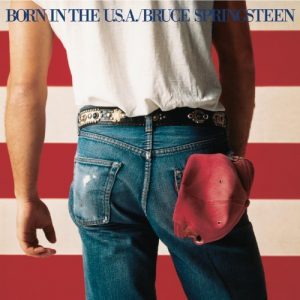Having recently read Michael Chabon’s “The Amazing Adventures of Kavalier & Clay” (2000) – which borrows from “Superman” writer Jerry Siegel and artist Joe Shuster’s professional tribulations, but not their personalities – I was inspired to read Larry Tye’s “Superman: The High-Flying History of America’s Most Enduring Hero” (2012).
The copyright saga
Neither underselling nor overwriting the complex history of this icon invented in the 1930s, Tye had me excitedly returning to the book as if I was reading a grand novel. The thread that sticks with me most is the famous/infamous saga of Siegel (and Shuster, although Siegel is the dominant personality and the one who contributed more to the lore) selling the copyright to DC Comics for $130 – something that resulted in court cases that will likely continue in perpetuity.
An episode of “Robert Kirkman’s Secret History of Comics” (“The Trials of Superman,” 2017) paints Siegel and Shuster as naïve victims of corporate trickery, but Tye’s exploration is more sober and balanced. This thoroughly researched book (of the 409 pages, footnotes and the bibliography take up more than 100!) includes the wording of the contract. While it’s in legal-ese, it’s also too wordy to imagine that Siegel and Shuster believed they were merely selling the publication rights to the contents of “Action Comics” No. 1.

“Superman: The High-Flying History of America’s Most Enduring Hero” (2012)
Author: Larry Tye
Genre: A nonfiction account of Superman’s literary and cultural history from the 1930s to 2012.
It seems more likely that Siegel had seller’s remorse. “High-Flying” taps into a grand saga of how DC won in legal court and Siegel and his family always won in the court of public opinion. Through the years they were able to get hundreds of thousands of dollars out of DC via public-relations pressure. (This was still good business by DC, as its “thank-you” payouts were a relative pittance.)
Boston journalist Tye shows how the business acumen of the DC honchos made “Superman” into a hot and timeless property. DC didn’t merely provide the publishing mechanism, but also the marketing savvy.
Supes’ narrative
While the copyright saga and Superman’s ubiquity in cross-promotions are memorable, Tye’s juiciest writing comes when chronicling Superman’s fictional narrative. The book serves a Cliff’s Notes telling of Supes’ saga.
One amusing tidbit is that for many years “Superman” and “Superboy” comics were on the shelves side by side, without explanation about the huge plot hole: They are the same person, but Superman’s origin story finds him gaining superpowers as an adult, Superboy’s as a kid. It would eventually be explained that they hail from different Earths in the multiverse.
Tye takes us through various narrative reboots, getting us to the present-day canonicity of Superman having the “Superboy” origin. (Interestingly, the courts ruled that Siegel and Shuster did own “Superboy” despite the $130 Superman copyright sale. This is such an odd legal distinction that one becomes suspicious that the courts felt sympathy and moral obligation toward the creators.)

Another fascinating reboot is one in the 1980s (hyped at the time, now a footnote) headed up by otherwise outstanding comic writer John Byrne, who bizarrely changed it so Superman is the alter-ego of Clark Kent. Usually (and now canonically, again) Clark is the alter-ego of Supes; this is a big reason why he’s unique and beloved.
Tye goes easy on Superman
It’s difficult to avoid rabbit holes when writing the complete history of a pop-culture figure, but Tye does streamline some things to the point of bordering on inaccuracy. He argues that any story with Superman in it (even if he’s a side character) becomes a “Superman” story, such is his stature.
And Tye contends that “Superman” – aside from Siegel’s very early stories where Supes is a vigilante like Batman — consistently stands for “truth, justice and the American way.”
But the author doesn’t make his case that Superman dominates all his stories, and he misses a chance to point to stories where Superman fails to live up to his ideals. The most famous – totally unmentioned by Tye – is Frank Miller’s “The Dark Knight Returns,” wherein Superman is a Reagan-era America-first warmonger, the villain in a “Batman” story. (“DKR” is a “What if” story, but Miller honestly probes Superman’s possible hypocrisy, and it is an official DC publication.)
Tye also trips up slightly by skimming over wider contexts, contending that the “Superman” property is the only force that matters in commercial decisions. For example, when he recounts “Smallville,” he doesn’t mention “Roswell” at all, and he says The WB looked to “Superman” because it had lost “Buffy” to another network.
The true situation was that The WB purposely ended its deals with “Buffy” and “Roswell” (which proved there was an audience for a saga of alien-human youths) in order to make room for “Smallville.” Unlike the other two shows, it was an in-house property, so more money could be pocketed. Tye misses an opportunity to illustrate how copyright rather than creativity drives corporate decisions, and to perhaps tie this theme into the Siegel saga.
But he finds room to critique the works
By no means is “High-Flying” a DC-vetted text, though. Tye critiques every incarnation of Superman except the universally loved 1978 film (where he does dig into the bizarre off-camera exploits of producer Alex Salkind). The author notes the poor flying effects in the 1940s serials, the fact that George Reeves didn’t distinguish Supes’ and Clark’s personalities in the 1950s TV series, the watering-down of the 1960s tales in the Comics Code era, the silliness of the last two Christopher Reeve films in the 1980s, the soapy nature of “Lois & Clark” in the 1990s and “Smallville’s” monster-of-the-week lethargy in the Aughts.
Still, Tye’s love for Supes comes through, and anecdotes prove the love was widespread. My favorite involves Joe DiMaggio sheepishly having a teammate buy him a “Superman” comic in the 1940s – a time when comics were kids’ stuff.
While Tye’s quotes from man-on-the-street “Superman” fans are rote, they are important for illustrating the enduring legacy. And they remind us that “High-Flying” is foremost a work of dogged research. In the foreword, Tye notes that he had never heard of “Smallville” throughout its entire run.
Despite that admission, he doesn’t come off as a fake “Superman” fan by any means. It would be interesting to hear what Tye has to say about the last decade: Supes killing Zod in 2013’s “Man of Steel,” truly being a side character in TV’s “Supergirl,” becoming an afterthought in the DCEU, and becoming just one of many CW DC Universe headliners in “Superman & Lois.”
But the big talking points are present in “Superman: The High-Flying History of America’s Most Enduring Hero.” You might want to supplement it with further reading – of both nonfiction and comics – but Tye’s book is an excellent place to start.

